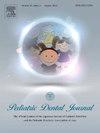Hypoxia enhances osteoclastogenesis in periodontal ligament cells via expression of VEGF and RANKL
IF 0.8
Q4 DENTISTRY, ORAL SURGERY & MEDICINE
引用次数: 0
Abstract
Introduction
Periodontal ligament (PDL) damage caused by dental trauma can lead to local circulatory disorders. The mechanisms through which PDL cells, once exposed to a transient hypoxic environment, contribute to tissue regeneration or resorption of pathological tooth roots after reoxygenation remain unclear. Therefore, we aimed to examine how changes in oxygen (O2) concentration affect PDL healing.
Materials and methods
Human PDL stem cells (hPDL cells) were cultured under normoxic or hypoxic (20% or 1% O2 concentration) conditions. Vascular endothelial growth factor (VEGF) and receptor activator of nuclear factor kappa-Β ligand (RANKL) expressions were measured using real-time quantitative polymerase chain reaction or Western blotting. Furthermore, a co-culture of hPDL and osteoclast precursor cells was used to demonstrate the effect of changes in O2 concentration on osteoclast formation.
Results
VEGF expression considerably increased over time under hypoxia compared with normoxia. However, during reoxygenation (24 h hypoxia–24 h normoxia), expression markedly decreased under hypoxia. No significant difference in RANKL expression was observed in both conditions after 24 h; however, it remarkably increased under hypoxia compared with normoxia after 48 h. In the osteoclast formation assay, the number of tartrate-resistant acid phosphatase (TRAP)-positive multinucleated cells considerably increased over time under hypoxia compared with normoxia. Notably, when VEGF expression was reduced using small interfering RNA, the number of TRAP-positive multinucleated cells decreased extensively.
Conclusion
Under hypoxic conditions, periodontal ligament cells produce VEGF to promote angiogenesis. However, excessive VEGF production, along with RANKL production, induces osteoclast formation. Osteoclast formation can be suppressed using rapid reoxygenation.
缺氧通过VEGF和RANKL的表达促进牙周韧带细胞破骨生成
牙外伤引起的牙周韧带损伤可导致局部循环系统疾病。PDL细胞一旦暴露于短暂的缺氧环境中,在再氧化后促进病理牙根的组织再生或吸收的机制尚不清楚。因此,我们旨在研究氧(O2)浓度的变化如何影响PDL愈合。材料与方法人PDL干细胞(hPDL cells)在常氧或缺氧(20%或1% O2浓度)条件下培养。采用实时定量聚合酶链反应或Western blotting检测血管内皮生长因子(VEGF)和核因子κ pa受体激活因子-Β配体(RANKL)的表达。此外,hPDL和破骨细胞前体细胞的共培养被用来证明O2浓度的变化对破骨细胞形成的影响。结果与常氧相比,低氧条件下vegf的表达随时间的延长明显增加。然而,在再氧过程中(24 h缺氧- 24 h常氧),低氧下表达明显降低。24h后两组RANKL表达无显著差异;在破骨细胞形成实验中,在缺氧条件下,抗酒石酸酸性磷酸酶(TRAP)阳性的多核细胞数量随时间的推移显著增加。值得注意的是,当使用小干扰RNA降低VEGF表达时,trap阳性的多核细胞数量大量减少。结论缺氧条件下牙周膜细胞产生VEGF促进血管生成。然而,过度的VEGF生成,以及RANKL的生成,诱导破骨细胞的形成。快速复氧可以抑制破骨细胞的形成。
本文章由计算机程序翻译,如有差异,请以英文原文为准。
求助全文
约1分钟内获得全文
求助全文
来源期刊

Pediatric Dental Journal
DENTISTRY, ORAL SURGERY & MEDICINE-
CiteScore
1.40
自引率
0.00%
发文量
24
审稿时长
26 days
 求助内容:
求助内容: 应助结果提醒方式:
应助结果提醒方式:


